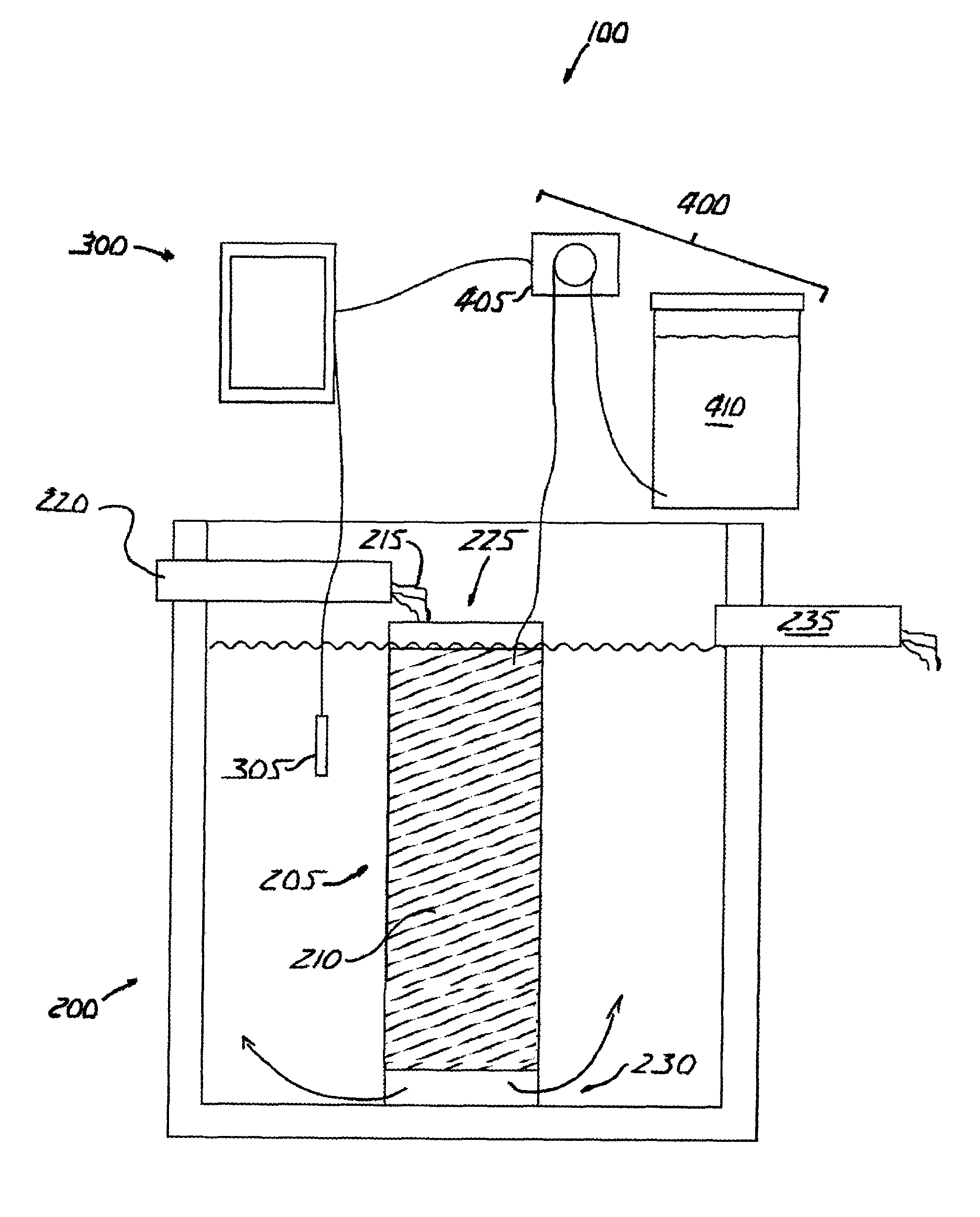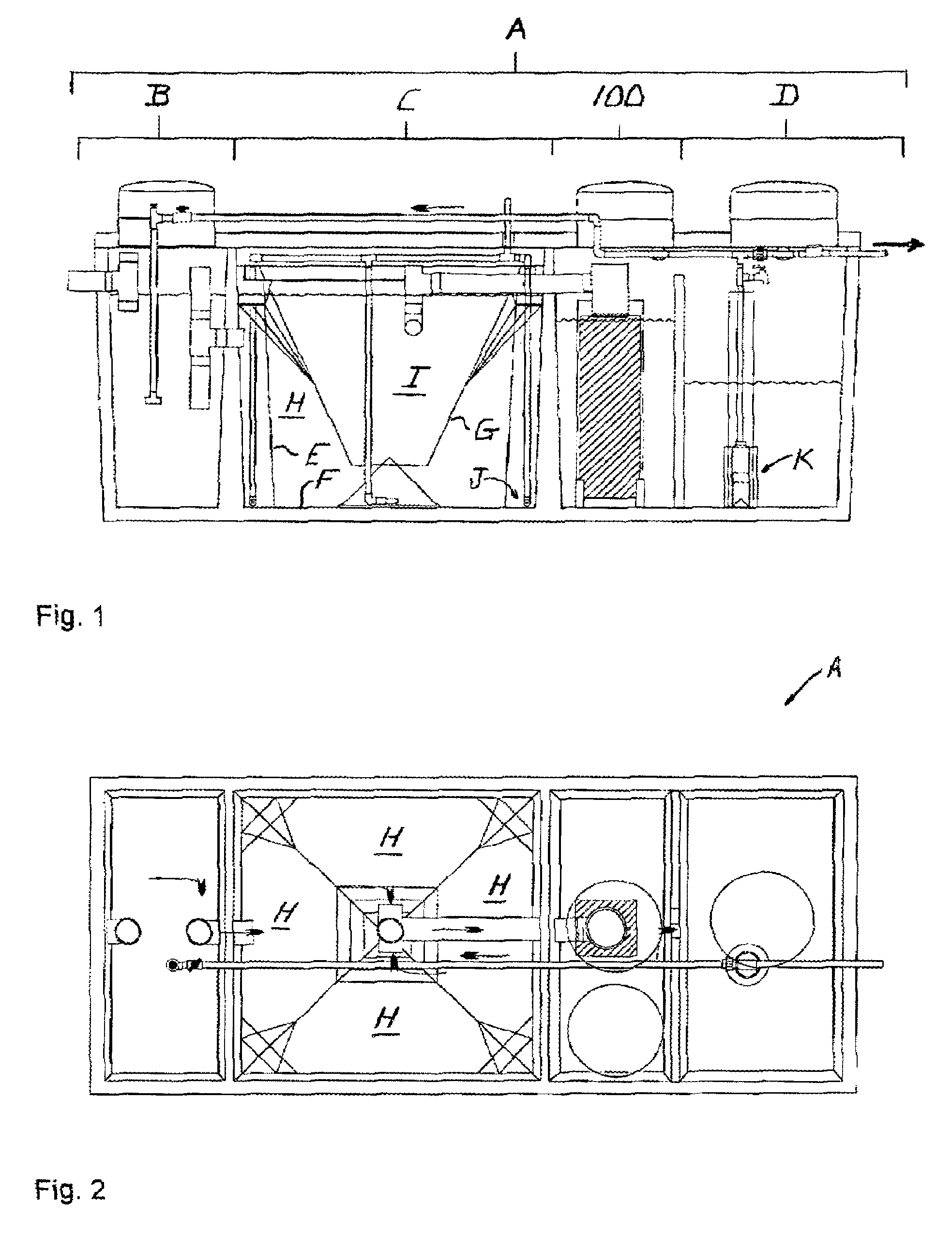Method of denitrifying wastewater
a wastewater and denitrification technology, applied in the direction of biological water/sewage treatment, water treatment parameter control, sustainable biological treatment, etc., can solve the problems of difficult disinfection of effluent with high nitrite, inability to decompose biologically refractory nitrogen, etc., to achieve dependable and effective effect, low cos
- Summary
- Abstract
- Description
- Claims
- Application Information
AI Technical Summary
Benefits of technology
Problems solved by technology
Method used
Image
Examples
Embodiment Construction
[0062]The invention is an apparatus for and method of denitrifying a solution that accepts nitrified solution and introduces a carbon source into the solution that promotes heterotrophic bacterial reduction of nitrate (NO3−).
[0063]Referring to FIGS. 1 and 2, a denitrification apparatus 100 is shown incorporated in a conventional wastewater treatment plant A. Wastewater treatment plant A includes a pre-treatment tank B, a treatment tank C and a holding tank D. Untreated solution flows into the pre-treatment tank B, into and through the treatment tank C, into and through denitrification apparatus 100, into and through the holding tank D, then is voided into the environment.
[0064]Pre-treatment tank B receives raw, untreated wastewater and initiates the aerobic phase of treatment during which aerobic bacteria break down the wastewater. Pre-treatment tank B also retains any non-biodegradables inadvertently introduced into the system, such as rags and plastic, which settle out prior to in...
PUM
| Property | Measurement | Unit |
|---|---|---|
| frequency | aaaaa | aaaaa |
| pH | aaaaa | aaaaa |
| oxidation reduction potential | aaaaa | aaaaa |
Abstract
Description
Claims
Application Information
 Login to View More
Login to View More - R&D
- Intellectual Property
- Life Sciences
- Materials
- Tech Scout
- Unparalleled Data Quality
- Higher Quality Content
- 60% Fewer Hallucinations
Browse by: Latest US Patents, China's latest patents, Technical Efficacy Thesaurus, Application Domain, Technology Topic, Popular Technical Reports.
© 2025 PatSnap. All rights reserved.Legal|Privacy policy|Modern Slavery Act Transparency Statement|Sitemap|About US| Contact US: help@patsnap.com



